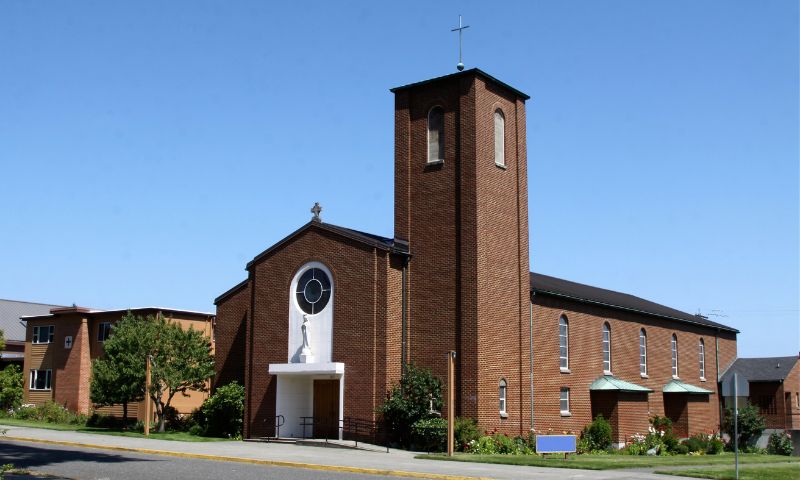Churches serve as community beacons, providing spiritual guidance, outreach programs, and social events. But while many congregations protect their primary worship facilities with property insurance, they often overlook coverage for other critical structures on church grounds. These additional structures—known as appurtenant buildings—are integral to church operations and deserve the same level of protection.
At Nolan Jackson Church Insurance, we help religious organizations safeguard every corner of their ministry. In this article, we highlight the top 5 appurtenant buildings churches frequently forget to insure and explain why doing so can save your church from costly financial losses and operational disruptions.
1. Parsonages (Clergy Residences)
Parsonages, or church-owned homes provided for clergy, are often seen as separate from ministry facilities. However, these buildings are part of the church’s assets and should be insured under an appurtenant building clause or as a standalone structure.
Why It Matters:
- If a fire, flood, or storm damages the parsonage and it isn’t covered, the church will bear full repair or rebuild costs.
- Parsonages are often used for pastoral counseling, small group meetings, or church administration—making them extensions of the church’s mission.
- Some insurance policies exclude residential buildings unless specifically endorsed, so it’s essential to confirm their inclusion.
Real-World Scenario:
A pastor’s home sustains heavy wind damage during a hurricane. The church assumes it’s covered under their property insurance—only to discover the parsonage wasn’t listed. The church now faces $80,000 in out-of-pocket repairs.
2. Detached Classrooms and Modular Units
Many growing churches rely on modular buildings or detached classrooms to house Sunday school programs, youth ministries, or Bible studies. These structures are functional and cost-effective, but they’re also commonly omitted from the main insurance policy.
Why It Matters:
- These buildings often contain electronics, books, and furnishings that add up in value.
- Youth activities may involve physical games or crafts, which increases the potential for property damage or liability claims.
- If not explicitly added to the insurance policy, these buildings may not be covered for fire, vandalism, or natural disaster losses.
Real-World Scenario:
A short circuit causes a fire in a portable classroom used by the children’s ministry. The building is completely destroyed, along with teaching materials and A/V equipment. Without appurtenant building insurance, the church incurs a $50,000 loss.
3. Garages and Maintenance Sheds
Utility buildings like garages, tool sheds, and maintenance storage units might not seem valuable, but they house critical tools, landscaping equipment, and seasonal decorations. Unfortunately, churches often forget to include them in their insurance policies.
Why It Matters:
- Snow blowers, mowers, power tools, and staging materials can represent tens of thousands of dollars in assets.
- These buildings are typically constructed of lighter materials, making them more vulnerable to wind, hail, or theft.
- Damage or theft may not qualify for reimbursement if these structures are not explicitly declared.
Real-World Scenario:
Thieves break into a church’s detached garage and steal $12,000 worth of lawn care and snow removal equipment. The insurance company denies the claim because the structure wasn’t listed on the original property declaration page.
4. Outdoor Pavilions and Fellowship Shelters
Outdoor pavilions are used for community picnics, weddings, and youth events. These open-air structures are vital to outreach and fellowship, yet they’re among the most commonly uninsured appurtenant buildings.
Why It Matters:
- Storms or falling trees can easily damage these open structures.
- Liability incidents—like a guest slipping on wet concrete or getting injured by a falling object—can occur during events.
- Without proper coverage, the church faces legal and structural repair costs.
Real-World Scenario:
A large limb crashes through the roof of a covered outdoor pavilion used for summer ministry events. Repairs cost $15,000, but insurance doesn’t reimburse the church because the pavilion wasn’t itemized under the policy.
5. Storage Buildings for Donations and Outreach Supplies
Churches often use small detached buildings to store food pantry supplies, clothing donations, disaster relief kits, or seasonal decor. These storage units are critical to outreach missions and need to be protected as such.
Why It Matters:
- Uninsured storage units mean loss of valuable resources for mission-driven efforts.
- Donated items often go unaccounted for in asset inventories, leaving them vulnerable.
- Fire, flood, or rodent damage can wipe out entire inventories in hours.
Real-World Scenario:
A leak in the roof of a detached storage shed ruins hundreds of pounds of food for the church’s monthly community distribution. Without insurance coverage, the food bank must pause operations and absorb the $5,000 loss.
Don’t Risk It – Insure Every Corner of Your Ministry
Appurtenant buildings aren’t secondary to your mission—they are essential infrastructure that support everything from worship to outreach. Overlooking these structures can lead to:
- Denied insurance claims
- Unexpected financial burdens
- Interruption of ministry services
- Legal liability exposure
At Nolan Jackson Church Insurance, we understand the unique needs of faith-based properties. Our expert agents specialize in crafting comprehensive policies that cover your entire property, including those often-forgotten structures that keep your ministry running.
Don’t let your church be blindsided by an uncovered loss. Let Nolan Jackson Church Insurance provide a free evaluation of your property and uncover any gaps in coverage. Contact us today for a custom church insurance quote that protects everything you’ve built—inside and out.
📞 Call now or visit Nolan Jackson Church Insurance to schedule your free consultation.

